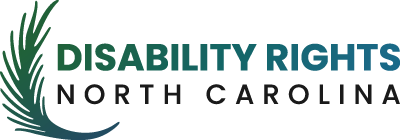TBI Program, Study, or Pilot
Type: Study
Agency Providing the Funding: Information Unavailable
Year Provided/Duration: 2010-2012
Funding Given To: N/A
Population (Juvenile Justice, Criminal Justice, Parole, Probation, Jail, Prison, etc.,)
System Group
Juvenile Justice
Location
New York City Jail System
Purpose/Goal
The purpose of this study was to understand the prevalence and incidence of TBI among adolescents who come into contact with the juvenile justice system. The aim was to rethink how to prevent adolescent entanglement with criminal justice, as well as how to manage adolescents’ needs while incarcerated.
(Diamond Ph.D., Haque M.S., Kaba M.A., MacDonald M.D., & Venters M.D., M.S., 2014)
Screening Tool Used
What tool was used?
Traumatic Brain Injury Questionnaire (TBIQ)
When is screening done?
Individuals were screened upon being newly admitted to the system.
What happens after screening?
N/A
Who Conducted Screening?
Information unavailable
Data Collection
Tracking
Information on the method of tracking unavailable.
Findings
At least one head injury was reported by 259 (67.4%) of the 384 screened inmates. The most frequent injury circumstances were assault (55.5%) and fall-related (41%).
A total of 125 inmates (32.5%) were in group 1, 68 (17.3%) in group 2, and 191 (49.7%) in group 3. Group 3 patients used significantly more in-jail mental health services and scored significantly higher on severity and frequency scales.
Females in group 3 were significantly more likely to use mental health services (75.0% vs. 48.0%; p ¼ .002), and TSSS and TSFS were significantly higher for girls in group 3 than for boys in the same group (TSSS: 2.2 vs. 1.56, p < .0001; and TSFS: 2.79 vs. 1.86, p < .0001). Males in group 3 were significantly more likely to recidivate than females (73.3% vs. 37.5%; p < .0001).
Risk of head injury per 100,000 person-years for adolescents was 21,757, and of TBI was 3,107. A total of 26% of screened patients were ever in solitary confinement in their incarcerations. (Diamond Ph.D., Haque M.S., Kaba M.A., MacDonald M.D., & Venters M.D., M.S., 2014)
Report findings were extensive and cannot be added as PDF’s to our site. Please submit a request at the link above and we will send the report(s) via email within 24-48 business hours.
Community Resources
Information and Referrals
N/A
Trainings
N/A
Agency Contact Information
Name
Brain Injury Association of New York
Website
Brain Injury Association of New York State
Phone Number
Sustainability
N/A
Advisory Board
N/A
How was this information acquired?
Information was acquired through the Journal of Adolescent Health
References: For more information on this states work, please see references
Diamond Ph.D., P., Haque M.S., A., Kaba M.A., F., MacDonald M.D., R., & Venters M.D., M.S., H. (2014). Traumatic Brain Injury Among Newly Admitted Adolescents in the New York. Journal of Adolescent Health, 54(5), 615-617. doi:https://doi.org/10.1016/j.jadohealth.2013.12.013
Notes: Additional mentions from state leads/representatives
New York does not currently have statewide, long-term programs regarding inmates with a TBI. They have worked a little bit with different state-run facilities in training their Corrections Officers on TBI and the general side effects etc.
